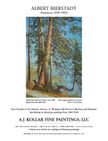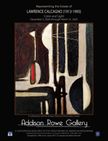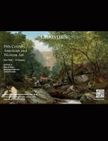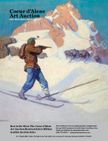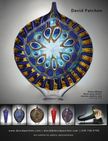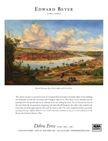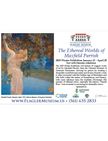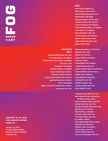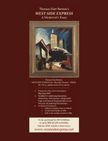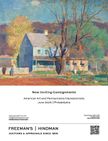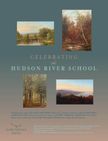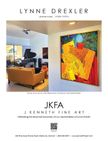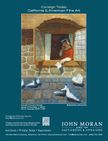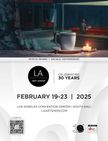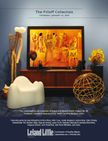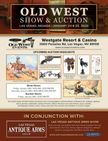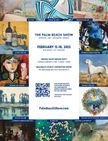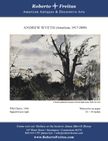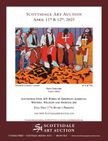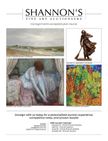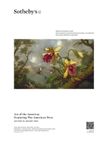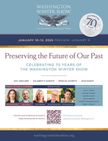Lawrence Calcagno (1913-1993) was the son of Italian immigrants and grew up on his family’s ranch near Big Sur, California. He began drawing at an early age. Later in life, his abstracted landscapes, rich with the sunny colors of California, and his free-form abstract expressionist paintings brought him wide fame. He began showing at the prestigious Martha Jackson Gallery in New York in 1955. He was artist-in-residence at several museums and taught at New York University in 1959 and 1960. In 1965 he was awarded a Ford Foundation grant and was named the visiting Andrew Mellon Chair of Painting at Carnegie Mellon University. The Smithsonian Institution organized a traveling exhibition of his works on paper. Yet, after his death, he and his work drifted into obscurity.

Lawrence Calcagno (1913-1993), Constellation of the Inner Eye #77, 1977-1978. Mixed media on paper, 30 x 22 in., signed lower right, titled and dated lower left.
Addison Rowe Gallery in Santa Fe has “the mission of promoting and resurrecting the legacies of significant artists whose contributions have been overlooked due to shifting market dynamics or moral and cultural challenges that have, at times, cast shadows over their work,” according to Victoria Addison Rowe, owner of the New Mexico gallery.
Addison Rowe Gallery and Amar Gallery in London have collaborated on the exhibition, Color and Light which will be shown in Santa Fe through March 31, 2025.

Lawrence Calcagno (1913-1993), Floating Landscape, 1976-1979. Acrylic on canvas, 78 x 68 in., signed, titled and dated on reverse.
“This exhibition is deeply personal to me, as it springs from my long-standing connection to the work of Lawrence Calcagno and my years of collaboration with his estate,” says Rowe. “The estate has worked tirelessly to keep his legacy alive, and this exhibition is part of a broader effort to restore Calcagno’s rightful place in the history of modern American art. Color and Light represents the third gallery exhibition of Calcagno’s work in the past three months, significantly broadening his reach and establishing his presence in international art markets, ensuring his enduring impact on the art world.”

Lawrence Calcagno (1913-1993), Circle of Fire, 1990. Oil on linen, 46 x 56 in., signed, titled and dated on reverse.
The life experience of artists is often overlooked in the examination of their work. The gallery notes, “This exhibition places Lawrence Calcagno at the forefront, celebrating his remarkable contributions as an artist. It also acknowledges his personal and professional relationship with the pioneering modernist painter Beauford Delaney, underscoring the challenges they both faced in 1950s America. As an interracial, homosexual couple in an era of intense racial and societal prejudice, the pair endured personal and professional hardships. This exhibition honors their bond and highlights the resilience they demonstrated in the face of such adversity.”
Calcagno and Delaney (1901-1979) met in Paris in the early 1950s. James Baldwin (1924-1987), the writer and civil rights activist was a friend to both artists and recalled an incident in which Delaney taught him to “see.”

Lawrence Calcagno (1913-1993), Untitled Landscape, 1983. Acrylic on canvas, 56 x 38 in., signed, titled and dated on reverse.

Lawrence Calcagno (1913-1993), White Garden, New York, 1990. Oil on canvas, 48 x 40 in., signed, titled and dated on reverse.
“I remember standing on a street corner with the black painter Beauford Delaney down in the Village, waiting for the light to change, and he pointed down and said, ‘Look.’ I looked and all I saw was water. And he said, Look again, which I did, and I saw oil on the water and the city reflected in the puddle. It was a great revelation to me. I can’t explain it. He taught me how to see, and how to trust what I saw. Painters have often taught writers how to see. And once you’ve had that experience, you see differently.”

Lawrence Calcagno (1913-1993), Semaphores, 1948. Oil on canvas, 40 x 32 in., signed and dated lower left.
The gallery notes, “Calcagno was a self-taught artist until after World War II, when he studied painting under the G.I. Bill in San Francisco, working with influential figures such as Clyfford Still and visiting artist Mark Rothko. In the years that followed, Calcagno became an integral part of the second generation of abstract expressionist painters, exhibiting in both San Francisco and New York. During this period, he developed a distinctive personal style of landscape painting, one that can be viewed as a metaphorical exploration of nature itself. His color palette—often dominated by the fiery oranges and reds of the California landscape—reflects the vivid, saturated hues of his environment. His more minimalist pieces, in contrast, evoke the misty fog of San Francisco, where shapes and forms emerge and dissolve in a way that speaks to the subconscious mind.”
In abstract landscapes such as Floating Landscape, 1976-1979, the “misty fog” is bisected by a strong horizontal horizon line. The artist’s spiritual quest and the almost spiritual nature of painting itself is illustrated in the mixed media on paper work, Constellation of the Inner Eye #77, 1977-1978. —
Powered by Froala Editor





